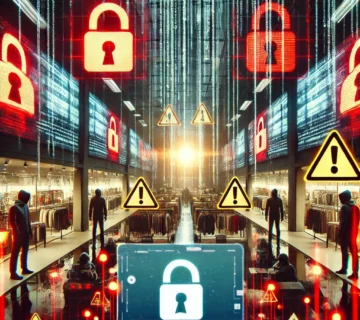Critical Cybersecurity News: TeamViewer Breach Developments, HubSpot Customer Incidents, and Insurance Troubles
The recent breaches involving TeamViewer and HubSpot, coupled with challenges in obtaining cyber insurance, highlight the increasing complexity of maintaining robust security measures. This article delves into the latest updates and implications of these critical incidents.
The TeamViewer Breach
What Happened? TeamViewer, a widely used remote access software, recently experienced a significant breach. Cybercriminals exploited vulnerabilities, gaining unauthorized access to user accounts and sensitive data. This breach, attributed to the Russian state-sponsored hacking group Midnight Blizzard (also known as Cozy Bear and APT29), has raised serious concerns about the security of remote access tools.
Implications for Users The breach risk’s identity theft, financial loss, and unauthorized access to confidential information for TeamViewer users. Those relying on the software for remote work and technical support may find their systems compromised, leading to further security issues.
Response from TeamViewer TeamViewer has implemented several security measures in response, including enhanced encryption protocols, two-factor authentication, and regular security updates. They have urged users to update their software and follow the best security practices.
Lessons Learned The TeamViewer breach underscores the importance of regularly updating software, using strong passwords, and enabling two-factor authentication. It serves as a reminder for businesses to conduct regular security audits and invest in robust cybersecurity measures to protect their systems and data.
HubSpot Customer Attacks
Incident Overview HubSpot, a leading CRM platform, recently reported targeted attacks on its customers. Cybercriminals exploited vulnerabilities to access customer data, including sensitive information such as contact details, emails, and sales records.
Impact on HubSpot Customers The attacks significantly impact HubSpot customers, particularly businesses relying on the platform for managing customer relationships. Compromised data can lead to identity theft, financial loss, and reputational damage. Affected businesses may also face legal and regulatory consequences for failing to protect customer data.
HubSpot’s Mitigation Efforts HubSpot has strengthened its security infrastructure, conducted thorough audits, and provided additional training for employees. They have been transparent with customers, offering regular updates and guidance on enhancing security.
Protecting Customer Data The HubSpot incident emphasizes the need for businesses to prioritize customer data security. Implementing strong encryption, regularly updating software, and conducting security awareness training are essential steps. Businesses should also have a robust incident response plan to quickly address and mitigate breach effects.
Challenges in Cyber Insurance
The Growing Need for Cyber Insurance As cyber threats evolve, the demand for cyber insurance increases. These policies offer financial protection against costs associated with breaches, cyber-attacks, and other incidents. However, the rising frequency and severity of cyber incidents pose challenges for insurers and policyholders.
Issues Facing the Cyber Insurance Industry One major challenge is assessing and pricing risk accurately due to the dynamic nature of cyber threats. The lack of standardized data and metrics further complicates the underwriting process.
Policy Exclusions and Limitations Many cyber insurance policies have exclusions for certain incidents or strict coverage conditions, leaving policyholders vulnerable to significant financial losses if unaware of policy terms.
Recommendations for Businesses To navigate cyber insurance complexities, businesses should carefully evaluate their needs and work with knowledgeable brokers. Investing in proactive cybersecurity measures reduces breach likelihood and demonstrates commitment to security to insurers.
Hackers Exploit Critical D-Link DIR-859 Router Flaw
What Happened? A critical vulnerability in D-Link DIR-859 WiFi routers is being actively exploited by hackers. This flaw, found in the “fatlady.php” file, allows attackers to collect account information, including passwords, leak session data, achieve privilege escalation, and gain full control via the admin panel.
Impact on Users The exploitation of this flaw poses severe risks, including unauthorized access to personal and business networks, data theft, and potential further attacks using compromised routers.
D-Link’s Response D-Link has acknowledged the flaw and issued a security advisory. However, since the DIR-859 model has reached its end-of-life and no longer receives updates, users are advised to replace their routers with more secure models.
Protecting Your Network Users should replace outdated routers with models that receive regular security updates. Additionally, using strong, unique passwords and enabling encryption can help protect network security. Regularly checking for firmware updates and applying them promptly is crucial.
The Importance of Cybersecurity Awareness
Educating Employees One of the most effective ways to enhance cybersecurity is by educating employees about security practices. Regular training can help employees recognize phishing attempts, avoid risky behaviors, and follow best practices for password management and data protection.
Implementing Strong Security Policies Businesses should implement comprehensive security policies outlining procedures for handling sensitive data, responding to incidents, and reporting potential threats. These policies should be reviewed and updated regularly to address emerging threats.
Investing in Advanced Security Technologies Advanced security technologies like AI and machine learning can help businesses detect and respond to threats more effectively. These technologies analyze vast data to identify patterns and anomalies indicating a cyber attack, enhancing threat detection and response capabilities.
The recent cybersecurity incidents involving TeamViewer, HubSpot, cyber insurance challenges, and the exploitation of D-Link router flaws underscore the importance of robust cybersecurity measures. Businesses must stay vigilant, educate employees, and invest in advanced security technologies to protect their systems and data. Understanding the complexities of cyber insurance requires thorough evaluation and proactive risk management. Prioritizing cybersecurity helps mitigate risks and safeguard operations and reputation.
FAQs
- What was the extent of the TeamViewer breach? The TeamViewer breach involved unauthorized access to user accounts and sensitive data, potentially exposing personal and business information to cybercriminals.
- How can HubSpot customers protect their data? HubSpot customers can protect their data by implementing strong encryption, regularly updating their software, and conducting security awareness training for their employees.
- What are the main challenges in the cyber insurance industry? The main challenges include assessing and pricing risk accurately, the lack of standardized data for evaluating cyber risk, and policy exclusions and limitations that can leave policyholders vulnerable.
- Why is employee education important for cybersecurity? Employee education is crucial for cybersecurity as it helps employees recognize and avoid potential threats, follow best security practices, and respond effectively to incidents.
- What are some advanced security technologies businesses can invest in? Businesses can invest in advanced security technologies such as artificial intelligence (AI) and machine learning (ML) to enhance their threat detection and response capabilities.
- How can businesses navigate the complexities of cyber insurance? Businesses can navigate complexities by carefully evaluating their insurance needs, working with knowledgeable brokers, understanding policy terms and exclusions, and investing in proactive cybersecurity measures.



